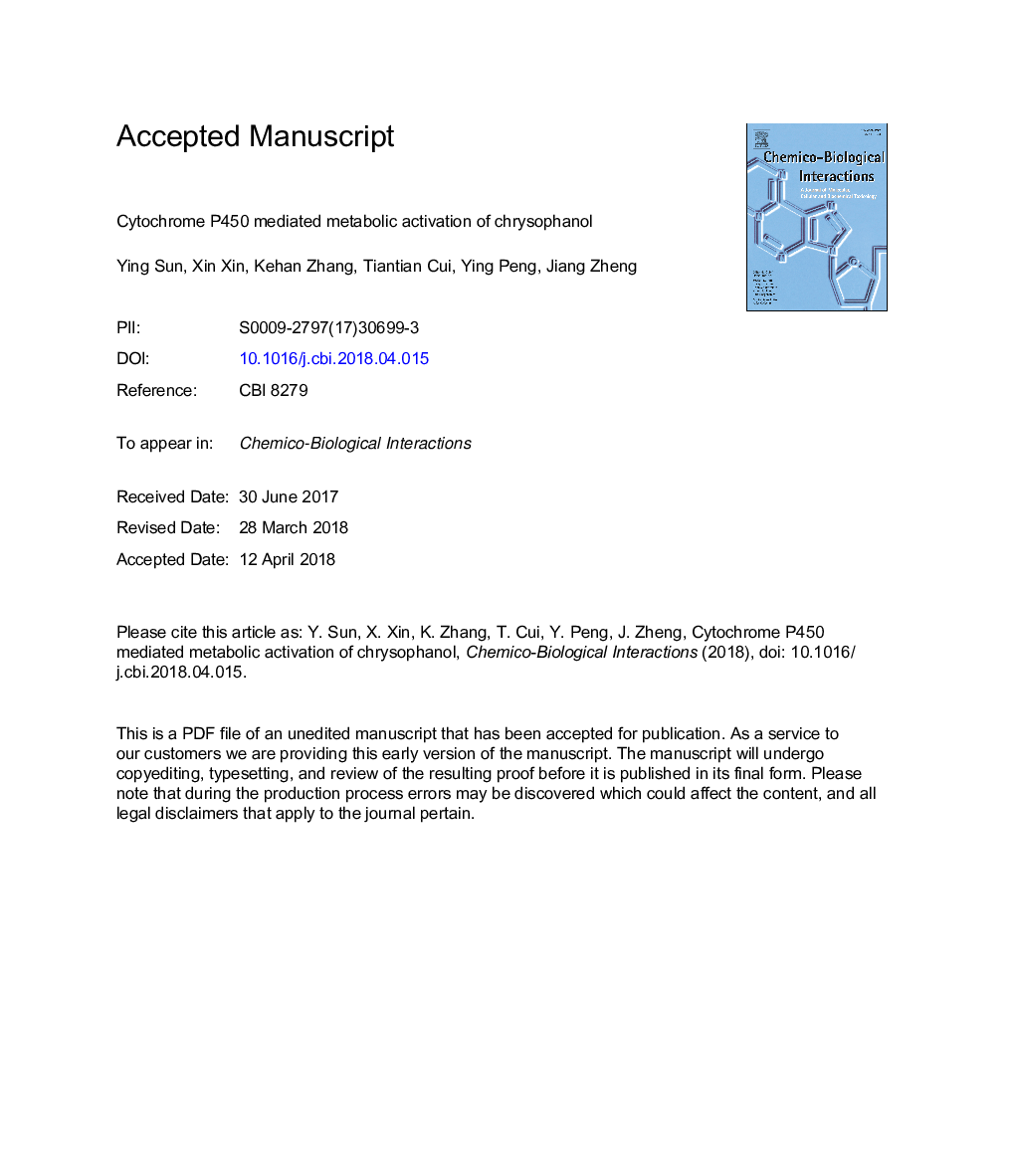| کد مقاله | کد نشریه | سال انتشار | مقاله انگلیسی | نسخه تمام متن |
|---|---|---|---|---|
| 8544764 | 1561553 | 2018 | 47 صفحه PDF | دانلود رایگان |
عنوان انگلیسی مقاله ISI
Cytochrome P450 mediated metabolic activation of chrysophanol
دانلود مقاله + سفارش ترجمه
دانلود مقاله ISI انگلیسی
رایگان برای ایرانیان
کلمات کلیدی
NADPHGSHNACMRMDDQEPIIDAnuclear magnetic resonance - رزونانس مغناطیسی هستهای2,3-Dichloro-5,6-dicyano-1,4-benzoquinone - 2،3-Dichloro-5،6-dicyano-1،4-benzoquinoneDMSO - DMSOLC-MS/MS - LC-MS / MSenhanced product ion - افزایش یون محصولcollision energy - انرژی برخوردNMR - تشدید مغناطیسی هستهای Dimethyl sulfoxide - دیمتیل سولفواکسیدLiquid chromatography-tandem mass spectrometry - طیف سنجی جرمی کروماتوگرافی مایع دو طرفهMultiple-reaction monitoring - نظارت چند واکنشN-acetyl cysteine - نیتستیل سیستئینdeclustering potential - پتانسیل تکاملیInformation-Dependent Acquisition - کسب اطلاعات وابستهGlutathione - گلوتاتیون
موضوعات مرتبط
علوم زیستی و بیوفناوری
علوم محیط زیست
بهداشت، سم شناسی و جهش زایی
پیش نمایش صفحه اول مقاله

چکیده انگلیسی
Chrysophanol, a major anthraquinone component occurring in many traditional Chinese herbs, is accepted as important active component with various pharmacological actions such as antibacterial and anticancer activity. Previous studies demonstrated that exposure to chrysophanol induced cytotoxicity, but the mechanisms of the toxic effects remain unknown. In the present metabolism study, three oxidative metabolites (M1-M3, aloe-emodine, 7-hydroxychrysophanol, and 2-hydroxychrysophanol) and five GSH conjugates (M4-M8) were detected in rat and human liver microsomal incubations of chrysophanol supplemented with GSH, and the formation of the metabolites was NADPH dependent except M4 and M5. M4 and M5 were directly derived from parent compound chrysophanol, M6 arose from M2, and M7 and M8 resulted from the oxidation of M4 and M5. Metabolites M5 and M6 were also observed in bile of rats after exposure to chrysophanol, M1-M3 and one NAC conjugate (M9) were detected in urine of rats administrated chrysophanol, and urinary metabolite M9 originated from the degradation of biliary GSH conjugation M6. Recombinant P450 enzyme incubation and microsome inhibition studies demonstrated that P450 1A2 was the primary enzyme responsible for the metabolic activation of chrysophanol and that P450 2B6 and P450 3A4 also participated in the generation of the oxidative metabolites. These findings helped us to understand the mechanisms of chrysophanol-induced cytotoxicity.
ناشر
Database: Elsevier - ScienceDirect (ساینس دایرکت)
Journal: Chemico-Biological Interactions - Volume 289, 1 June 2018, Pages 57-67
Journal: Chemico-Biological Interactions - Volume 289, 1 June 2018, Pages 57-67
نویسندگان
Ying Sun, Xin Xin, Kehan Zhang, Tiantian Cui, Ying Peng, Jiang Zheng,